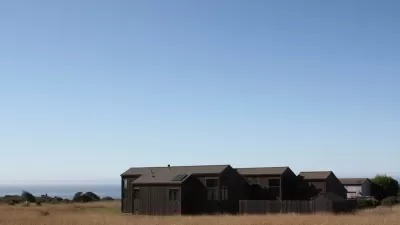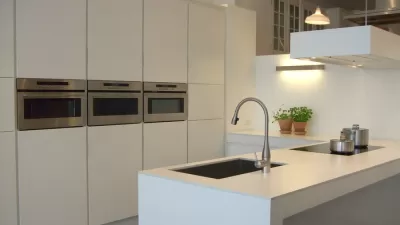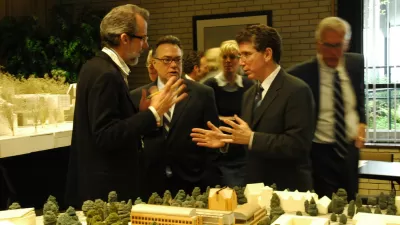Mass-market production and the commodification of housing has led to a ‘flattening’ of design into a limited set of bland, homogeneous options.

In a piece for the Dallas Morning News, architecture critic Mark Lamster describes what he calls “The Flattening” of American culture, wherein products such as cars and houses that once featured unique designs are increasingly similar to each other.
Lamster writes, “To drive around Dallas (or any American city) is to be confronted by an endless series of cheaply constructed apartment blocks, three to five stories in height, with clunky beige bays that stretch for blocks on end.” To Lamster, this sameness is “an insult to the art” of architecture.
This homogeneity, according to Lamster, boils down to “a conservatism inherent in American culture,” an ethos that is “inherently risk averse.” Meanwhile, a disconnection from the house as a “multigenerational homestead” and its transformation to a commodity encourages builders to try to appeal to as wide an audience as possible with inoffensive, bland designs and cheap, readily available materials.
Not leaving out the workplace, Lamster also critiques the modern office tower, which “has likewise become a cliche repeated ad nauseum.” Modern design, Lamster argues, “is almost entirely driven by economics.”
The drive to maximize short-term profit pervades all aspects of society, Lamster argues, recommending “a shift in economic policy” that would “incentivize long-term profit over quarterly growth,” although Lamster admits he doesn’t have a suggestion for what this shift would entail. However, the ravages of climate change, which threaten our complacent bubble, could force the kind of broad change required to snap us out of the comfortable, but bland, status quo.
FULL STORY: Why does everything look the same in North Texas? Blame the ‘flattening’

Alabama: Trump Terminates Settlements for Black Communities Harmed By Raw Sewage
Trump deemed the landmark civil rights agreement “illegal DEI and environmental justice policy.”

Planetizen Federal Action Tracker
A weekly monitor of how Trump’s orders and actions are impacting planners and planning in America.

The 120 Year Old Tiny Home Villages That Sheltered San Francisco’s Earthquake Refugees
More than a century ago, San Francisco mobilized to house thousands of residents displaced by the 1906 earthquake. Could their strategy offer a model for the present?

BLM To Rescind Public Lands Rule
The change will downgrade conservation, once again putting federal land at risk for mining and other extractive uses.

Indy Neighborhood Group Builds Temporary Multi-Use Path
Community members, aided in part by funding from the city, repurposed a vehicle lane to create a protected bike and pedestrian path for the summer season.

Congestion Pricing Drops Holland Tunnel Delays by 65 Percent
New York City’s contentious tolling program has yielded improved traffic and roughly $100 million in revenue for the MTA.
Urban Design for Planners 1: Software Tools
This six-course series explores essential urban design concepts using open source software and equips planners with the tools they need to participate fully in the urban design process.
Planning for Universal Design
Learn the tools for implementing Universal Design in planning regulations.
Clanton & Associates, Inc.
Jessamine County Fiscal Court
Institute for Housing and Urban Development Studies (IHS)
City of Grandview
Harvard GSD Executive Education
Toledo-Lucas County Plan Commissions
Salt Lake City
NYU Wagner Graduate School of Public Service





























